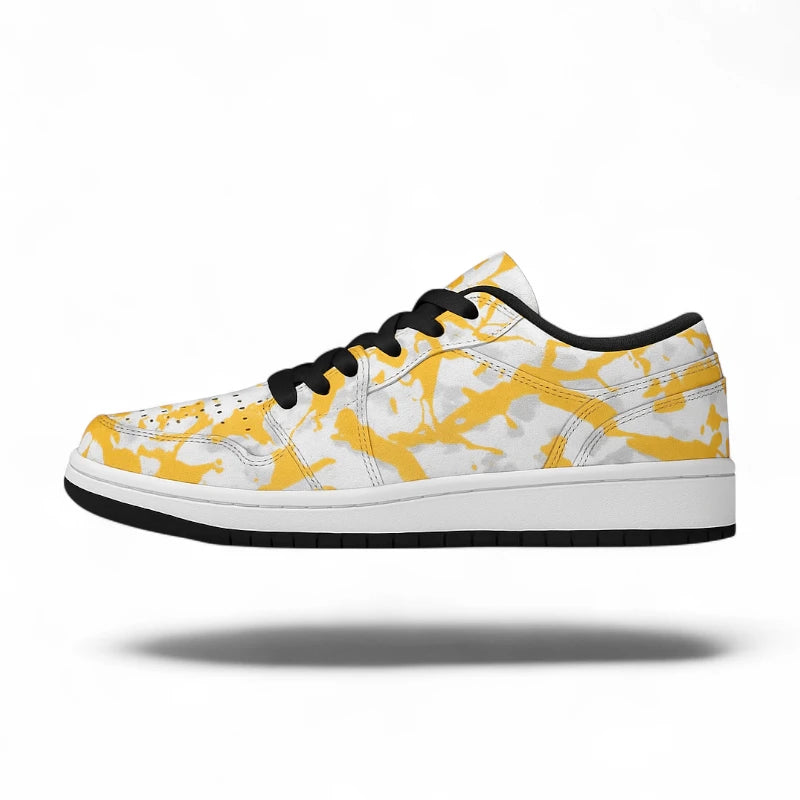Why Custom Sneakers Are the Hottest Flex of 2025
Open your phone in 2025 and every third post shows sneakers you’ve never seen on a shelf. They aren’t limited-edition drops from big brands; they’re one-offs people designed themselves—colors picked to match a bike, initials stitched inside the tongue, midsoles tuned to a runner’s stride.
Custom shoes have moved from niche hobby to the loudest status signal on the street, and the reasons run deeper than hype. Price, tech, comfort, and climate all play a part. Let’s break down why bespoke kicks beat factory pairs this year—and how you can build a set that’s unmistakably yours..
1. The Numbers Behind the Boom
Global demand isn’t hype alone. Analysts peg the custom-shoe market at US $2.82 billion in 2025, up 11.7 percent from last year. (thebusinessresearchcompany.com) Another report puts this slice of footwear at US $6.65 billion today and on track to double by 2032. (openpr.com) When an industry grows faster than streaming video did in its prime, something big is shifting.
2. Gen Z Wants One-Pair Stories
Zoomers see sneakers as social ID cards. A Footwear Magazine survey shows shoe charms, mismatched laces, and bespoke colorways topping their wish lists for 2025.
Style trackers at Who What Wear add that Gen Z would rather “gatekeeper” a unique pair than chase a mass-market drop. In a research, 73 percent of under-30 buyers say a sneaker feels “dead” if someone else on their feed already has it.
Old status symbols—price tags and limited-edition logos—still matter, but narrative matters more. A custom sneaker lets you wear your playlist, hometown, or gamer tag on your feet.
3. Tech Makes Bespoke Affordable
A decade ago, getting shoes built around your feet meant visiting a cobbler and paying couture prices. Now a phone camera scans your arches in thirty seconds. Factories slot data into 3-D printers and robotic stitchers, trimming waste and tooling costs. That efficiency is why a fully personalized pair can land at your door for less than two hype-release retail prices.
4. Comfort Tops the Hype Ladder
Flex means nothing if blisters ruin the night. Custom platforms solve fit first, flair second. Split sizing balances odd-size feet; variable lacing channels relieve high insteps; custom midsoles tune cushion density to weight class. Runners cut injury risk, dancers stay on their toes longer, and everyday commuters ditch foam inserts for good.
5. A Greener Way to Buy
Traditional footwear runs on overproduction—brands guess demand, then markdown what doesn’t sell. Bespoke flips the script: every pair has a home before the first press clicks.
Fewer dead-stock mountains equal fewer landfill tons. Shoppers tracking carbon footprints see custom as the cleaner path: buy one rugged pair, repair it, and skip the five throwaways.
6. Social Media Turbocharges the Cycle
Tik Tok “unbox my design” hashtag has logged billions of views. A fifteen-second clip of a tie-dye midsole can spark thousands of copycat designs by nightfall. Fans tag the maker, re-mix the palette, and push the concept viral. Because no two sneakers finish identical, the trend feeds on itself without saturating.
7. Big Brands Bless the Trend
When Nike, Adidas, and New Balance each sink R&D cash into personalization studios, you know the wave is real. Nike’s By You line even mines customer color data to inform its general releases. Heritage giants legitimize the custom route, but they also raise bars for smaller labels—quality, delivery speed, and online design tools all climb in response.
8. Performance Gains for Pros—and Weekend Warriors
Basketball players add ankle wraps for lateral cuts; marathoners tweak forefoot rebound. Brands now let you map pressure points and choose plate stiffness.
Weekend athletes copy the pros, ordering gym pairs that spare knees on play days and sprint spikes fitted to gait angle. Custom no longer means just pretty; it means healthier joints.
9. Creator Economy Meets Factory Floor
Remember kids repainting Air Force 1s in bedrooms? Some now run micro-brands with worldwide shipping. Online configurators connect their Photoshop files to industrial sewing machines in Vietnam, Portugal, or Detroit. Distance no longer blocks craft, and the line between designer and consumer blurs by the week.
10. Step-by-Step: Build Your 2025 Flex
-
Choose a canvas. For everyday wear, start inside our custom low-tops.
-
Pick your palette. Two foundational shades; one pop on lace tips or stitching.
-
Select materials. Full-grain leather for patina, recycled knit for airflow, vegan suede for matte richness.
-
Add personal marks. GPS coordinates under the heel tab or a favorite lyric in UV-reactive ink.
-
Dial the sole tech. Soft EVA for street comfort; carbon-infused plate for race day.
Need ankle armor? Slide into the custom high-tops and raise the collar to taste. Chasing signature hops? Our custom basketball range lets you tweak traction patterns by court type.
11. How to Style a One-of-One
-
Mute the outfit. Let sneakers headline; think raw denim, plain tee.
-
Echo accents. Match the lace pop to a cap logo or watch strap.
-
Rotate pairs. Alternate customs to extend sole life and keep looks fresh.
-
Respect the story. If the heel says “Tokyo 3 a.m.,” skip the Texas rodeo belt buckle.
12. The Road Ahead
Augmented-reality mirrors will soon let you “try on” 3-D prototypes at home. Lab-grown leather promises identical feel with one-tenth the water use.
Some brands pilot subscription repairs—send worn midsoles back, receive fresh ones snapped onto upper shells. Expect sneaker ownership to blend with software-style updates: patches, mods, seasonal layer swaps.
13. Key Takeaways
-
Market momentum is real. Double-digit growth proves lasting demand, not fad.
-
Individuality wins clout. A story stitched in suede beats a logo stamped in gold.
-
Tech tears down the price wall. Custom now costs mid-tier retail, not luxury.
-
Sustainability sells. Made-to-order cuts waste and boosts repair culture.
-
Big players raise standards. Giants pushing bespoke make everyone’s tools sharper.
